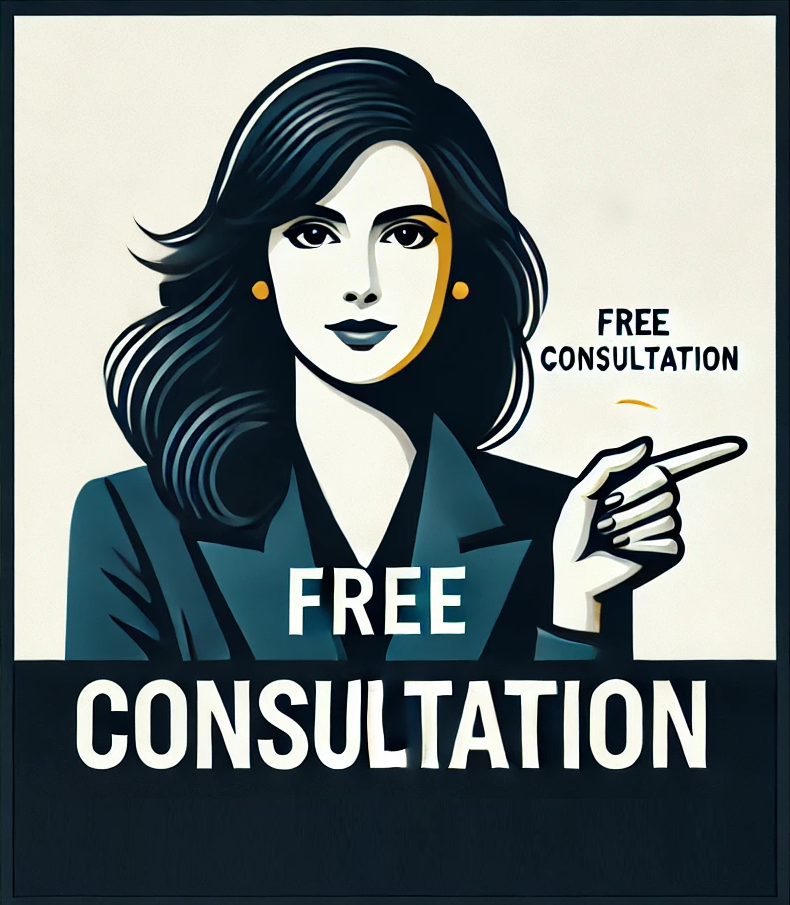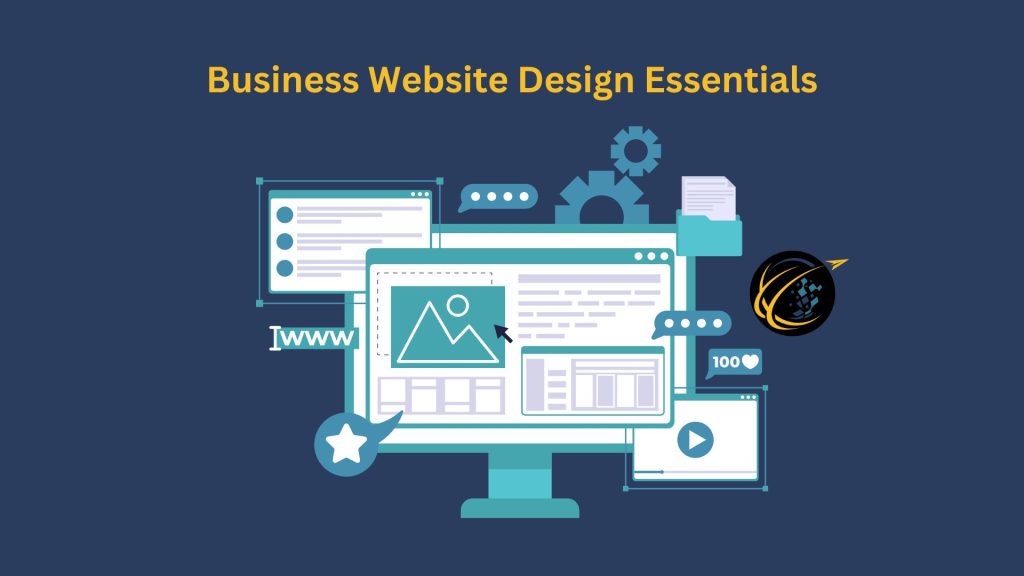
User-Friendly Navigation and Layout
A user-friendly navigation and layout are critical components of any successful website. Visitors need to find what they’re looking for quickly, and an intuitive design ensures that they stay engaged. A clear, simple layout helps users move effortlessly through your site, enhancing their experience. The primary navigation should be visible and labeled with straightforward terms to avoid confusion. Dropdown menus and a search bar can help guide visitors to deeper content without overwhelming them. Focusing on these aspects is one of the key business website design essentials.
An intuitive design also ensures that visitors don’t have to guess where to go next. Breadcrumbs, internal links, and call-to-action buttons provide a clear path. When users can easily find products or information, they are more likely to engage further or convert. Consistent layout across all pages contributes to familiarity, preventing unnecessary distractions or confusion.
Incorporating a simple navigation structure also helps with SEO. Search engines crawl websites more effectively when the structure is logical and user-friendly. This improves your visibility, making it easier for customers to find your business. Keeping navigation simple and user-focused is essential when implementing business website design essentials.
Mobile Responsiveness
Mobile responsiveness is crucial as more users access websites through their smartphones and tablets. A site optimized for mobile adjusts its layout and design to fit different screen sizes, ensuring an easy and seamless experience. If your website doesn’t load properly on mobile devices, users may leave quickly, increasing your bounce rate and hurting your SEO rankings. Therefore, making mobile optimization a priority is one of the key business website design essentials for attracting and retaining users.
Responsive design not only improves user experience but also boosts your site’s visibility in search results. Google uses mobile-first indexing, meaning it primarily considers the mobile version of a website when determining search rankings. A site that loads quickly and looks professional on mobile is more likely to rank higher. This can lead to more traffic and better engagement from mobile users, who now make up a significant portion of web traffic.
To achieve mobile responsiveness, use flexible grids, scalable images, and CSS media queries that adapt to different devices. By testing your site on multiple screen sizes, you ensure that your content is accessible and visually appealing on all platforms. Integrating mobile optimization into your business website design essentials strategy helps you meet the needs of today’s tech-savvy users and improves overall performance.
SEO Best Practices
Incorporating search engine optimization (SEO) best practices into your website is essential for improving search rankings and increasing visibility. One key technique is using meta tags effectively. Meta titles and descriptions provide search engines with a clear summary of your page’s content. Including relevant keywords in these tags helps search engines understand what your page is about and improves your chances of ranking higher. Optimizing these elements is a crucial step in business website design essentials for boosting your site’s performance.
Another important aspect of SEO is proper keyword placement. Keywords should be strategically placed throughout your content, particularly in headers, subheaders, and body text. This makes it easier for search engines to match your content with user queries. However, it’s important to use keywords naturally. Overstuffing your page with keywords can lead to penalties from search engines, hurting your rankings. Using relevant keywords in a balanced way is vital for improving search engine results.
Additionally, internal linking and optimizing images with alt text contribute to better SEO performance. Internal links help search engines crawl and index your site more effectively, while alt text helps make your images searchable. These practices, combined with keyword optimization and meta tag usage, ensure your site ranks well and drives traffic. Incorporating these SEO methods is an essential part of business website design essentials for long-term success.
Effective Call-to-Actions (CTAs)
Effective call-to-actions (CTAs) play a critical role in guiding visitors through your website and encouraging them to take specific actions. A well-designed CTA can significantly improve conversions, turning casual visitors into customers or leads. Whether it’s a “Buy Now” button or a “Subscribe” banner, a clear and compelling CTA drives action by providing a simple, visible path forward. When done right, CTAs are one of the business website design essentials for boosting engagement and conversions.
The design and placement of your CTA are key factors in its effectiveness. CTAs should stand out visually, using contrasting colors or bold fonts to grab attention. They should also be placed strategically in high-traffic areas, such as at the end of blog posts, on landing pages, or within product pages. Simplicity is important — a clear message with action-oriented language such as “Sign Up,” “Learn More,” or “Download Now” makes it easy for users to understand the next step.
Another important aspect of CTAs is ensuring that they lead to a well-optimized landing page. Once visitors click a CTA, the transition should be smooth, with the landing page reinforcing the offer and guiding users to complete the desired action. Testing different CTA designs, placements, and messaging can help improve performance over time. Integrating well-designed CTAs into your website is an essential part of business website design essentials, ensuring users stay engaged and complete the actions that benefit your business.
Website Loading Speed Optimization
Optimizing your website’s loading speed is crucial for enhancing both user experience and search engine rankings. Slow-loading websites frustrate users, often leading to higher bounce rates. Studies show that visitors tend to abandon pages that take longer than three seconds to load. Fast loading times help retain visitors, improve engagement, and create a positive user experience. Additionally, Google uses loading speed as a ranking factor, so optimizing your website can boost your visibility. Therefore, focusing on speed is one of the business website design essentials for better performance.
There are several ways to reduce load time and improve website speed. One effective method is optimizing images by compressing them without sacrificing quality. Large image files significantly slow down loading times, so using appropriate formats like JPEG or WebP can help. Minimizing HTTP requests is another tip—reduce the number of files your site must load by combining CSS or JavaScript files. Using browser caching also improves speed by allowing returning visitors to load saved copies of your website instead of re-downloading all content.
Reducing unnecessary plugins and using content delivery networks (CDNs) can further enhance your website’s loading speed. CDNs distribute content across multiple servers worldwide, ensuring faster access for users based on their location. Compressing files and enabling lazy loading for images or videos can also reduce load times. These optimization techniques are essential components of business website design essentials, ensuring a smoother user experience and improved search engine performance.
Content Management and Visual Appeal
Clear, well-organized content is key to creating a positive user experience on your website. When your content is structured logically and easy to read, it keeps visitors engaged and helps them find the information they need quickly. A clean layout with short paragraphs, headers, and bullet points (when appropriate) makes your content digestible and visually appealing. This not only improves user engagement but also enhances your website’s credibility. Consistent, high-quality content is one of the business website design essentials that contributes to brand trust and authority.
Visual appeal plays an equally important role in website design. Appealing visuals, including high-quality images, videos, and graphics, capture visitors’ attention and make your website more engaging. Visual elements help break up large sections of text, making the content easier to scan. Effective use of color, typography, and whitespace also contributes to a clean, professional look, which reinforces your brand’s image. A visually pleasing site, combined with well-organized content, enhances both the user experience and your brand’s credibility.
By blending clear content with strong visuals, your website becomes a powerful tool for communication. Users are more likely to stay on your site longer and return in the future if they find the content useful and the design appealing. These elements are core business website design essentials that ultimately improve your site’s effectiveness and support business goals.
Conclusion
In conclusion, focusing on business website design essentials is key to creating an effective online presence. Elements such as user-friendly navigation, mobile responsiveness, and fast loading times improve both user experience and search rankings. By incorporating strong visuals and clear content, you enhance engagement and build trust with visitors. Ensuring SEO best practices and using effective calls-to-action further drive business growth. When these components come together, your website becomes a powerful tool for attracting customers and achieving business success. Continuously refining these elements will keep your website relevant and high-performing.


